| First impressions of Monmouth, Wales
|
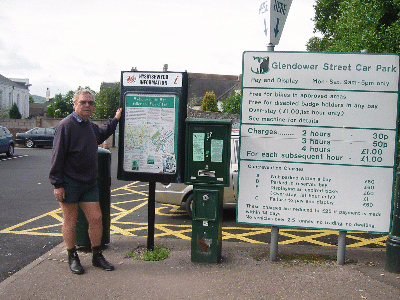 First park, pay and display First park, pay and displayWe followed the arrows, and found a car park with spaces. The challenge was to find our way back to the east shore of the Wye River, achieved with only two detours. Both direction givers were very amused by our Australian accents.
|
Take note of landmarks - Woolworths is across the road
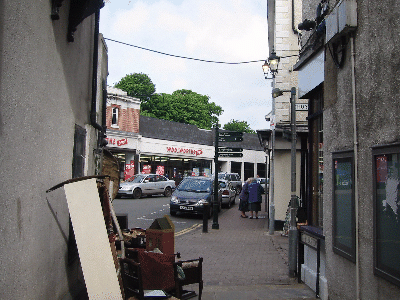 Turn left in Priory St to see Agincourt Square, and enjoy the luxury of history beginning with the Romans, who named the area Blestium. To quote 'one of Britain's most famous kings, Henry V was born in Monmouth castle in 1387'. In 1673 the castle was rebuilt by the Marquis of Worcester, and now houses the Royal Monmouthshire Engineers, the senior reserve regiment in the British Army. |
The Bridge from inside the town
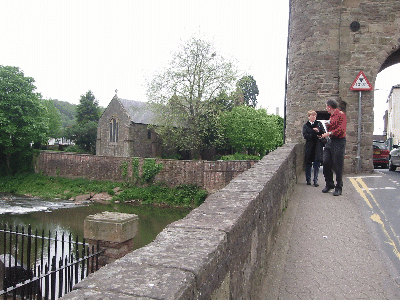 The modern bridge over the Wye did not prepare us for this beauty, at the southern entry to the town. Ducks represented the original inhabitants, and show the cleanliness of the water. Tolls are not new - many a carter was pleased to pay a fee to cross the wooden bridge and save his load risking the river bed. |
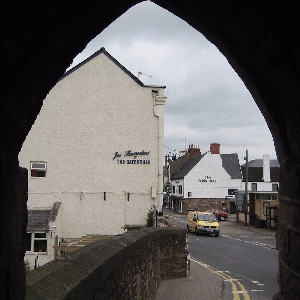 Looking north through the main arch of the bridge, and back up Monnow Street Looking north through the main arch of the bridge, and back up Monnow StreetMonmouth once had over 50 Pubs, now there are 13, each with a different feature. |
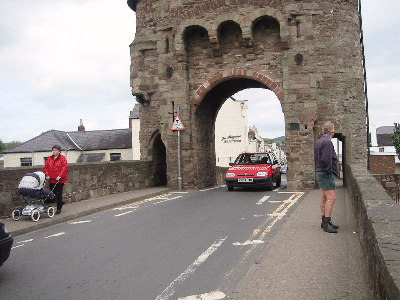 The bridge is single lane The bridge is single laneIn the 13th century the old bridge needed replacing, and now we have the only surviving medieval fortified stone bridge with a gatehouse actually on the bridge. It was completed with a porticullis and a battlemented parapet. In the 18th century the building was converted into a house, with the parapet becoming an attic. One writer comments that the waters were so shallow an invader could just wade across. |
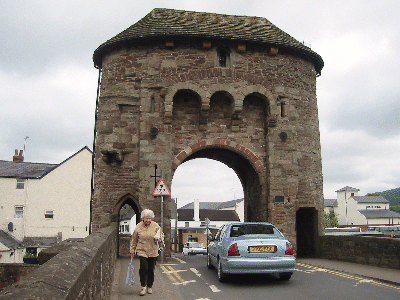 Got the walls straight! Got the walls straight!After resisting the Normans in 1066, during the Civil War (1643 - 1673) Monmouth was held by each side (Royalists and Roundheads). Traffic into town increased and in the early 1800s the bridge was redesigned. It was widened, and pedestrian passageways were built. Now it is moving smoothly into the Post Millenium 'noughty' era. |
We had the 'eighties' and the 'nineties', now a bright spark has called this the 'noughties'. (Think of Noughts and Crosses) Return to my Trip Page. |
If you enjoy this page, please Email me.
©
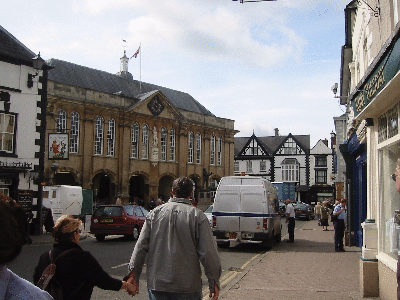 First visited on Weds 7th May, 2003.
First visited on Weds 7th May, 2003.